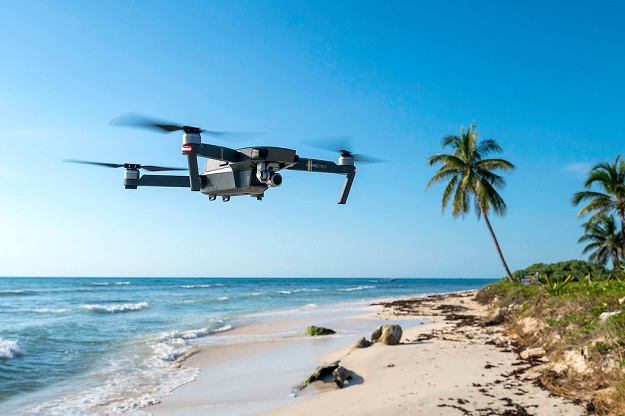The vital infrastructure that keeps the cities functioning is deteriorating along with our cities. Bridges, roads, and buildings must undergo routine inspections to guarantee their operation and safety. Traditional inspection techniques may be costly, time-consuming, and risky for inspectors. However, drone technological breakthroughs have begun a new age of infrastructure inspection. Drones provide a safer, more effective, and more affordable option for evaluating outdated infrastructure. This essay will examine how drones are transforming inspection procedures and the advantages they offer.

Enhanced Safety
Using drones to check infrastructure has several important benefits, one of which is the increased safety they offer. Inspectors run the danger of falls or injuries since inspecting old structures sometimes necessitates climbing, rappelling, or utilizing heavy equipment. Inspectors can altogether avoid such risks by using drones. High-resolution drone cameras and sensors can collect precise data and photographs at a safe distance. Drone inspections are the best option for difficult or dangerous places since this lowers inspectors’ risk of harm or even death.
Time Efficiency
Examining significant infrastructure projects may take a lot of time and resources, including labor. A quicker and more effective substitute is drones. Drones can fly at different heights and speeds, which allows them to cover a bigger area in comparison to other inspection techniques while taking up much less time. Drone-captured data may also be processed and analyzed fast, enabling speedy decision-making and action. This speedy process reduces expenses while causing the least interference with the infrastructure’s regular operations.
Cost-savings
Conventional infrastructure inspection techniques sometimes entail using large machinery, expensive instruments, and labor-intensive personnel. These elements may result in significant expenditures. The use of drones for inspection can result in considerable cost reductions. Drones may be operated for very little money with little maintenance and a qualified operator. Additionally, drones can gather data and images of a high caliber, negating the need for pricey specialist equipment. The cost-effectiveness of a drone bridge inspection makes it an attractive option for government agencies and private companies alike.
Accessibility to Challenging Areas
Inspecting aging infrastructure often presents challenges in reaching certain areas that are difficult to access. This may apply to isolated areas, high buildings, or the undersides of bridges. These accessibility problems can be solved by using drones, which provide inspectors a bird’s-eye perspective and access to places they couldn’t otherwise get to. Drones with cutting-edge cameras and sensors may collect precise pictures and spot possible structural flaws. Even in the most difficult situations, this capacity provides comprehensiveness and thoroughness of examinations.
Improved Data Analysis and Collection
To evaluate the status of aging infrastructure, precise data collection during inspections is essential. Drones with high-resolution cameras and sensors may collect precise heat data, LiDAR scans, and photographs, giving important information on the structural health of bridges and other infrastructure. Advanced algorithms and machine learning approaches can be used to examine the data to identify possible problems that might not be obvious to the human eye. This data-driven methodology makes prompt repairs and preventative maintenance possible, extending the life and safety of aged infrastructure.
Reduced Disruption
Regular infrastructure inspections frequently call for the closing of buildings, bridges, or roadways, which annoys and disrupts the public. These interruptions can be reduced or perhaps avoided with drone inspections. Infrastructure may be swiftly and effectively inspected by drones without the need for significant traffic interruptions or road closures. This not only enhances the general user experience but also lessens the negative economic effects of extended closures. An easier and less invasive method of maintaining and monitoring deteriorating infrastructure is through drone inspections.
Environmental Benefits
Using drones to check infrastructure has environmental advantages in addition to practical ones. Traditional inspection techniques frequently entail the operation of heavy equipment, the usage of vehicles, and the burning of fuel. Drone inspections can replace these operations to cut carbon emissions drastically. Since drones run on electricity, which can be produced using renewable energy, they are even more environmentally friendly. The use of drone technology for infrastructure inspection is in line with worldwide initiatives to minimize carbon footprints as sustainability gains in importance.
Conclusion
The world soars towards a future where infrastructure inspections are safer, quicker, and more cost-effective by embracing the buzzing wings of drone technology. These amazing machines provide access to the unreachable and accurately capture precise data, giving greater efficiency. In exchange for a smooth inspection procedure that maintains your city prospering while causing the least disturbance to the general public, say goodbye to conventional systems requiring closures and interruptions.




